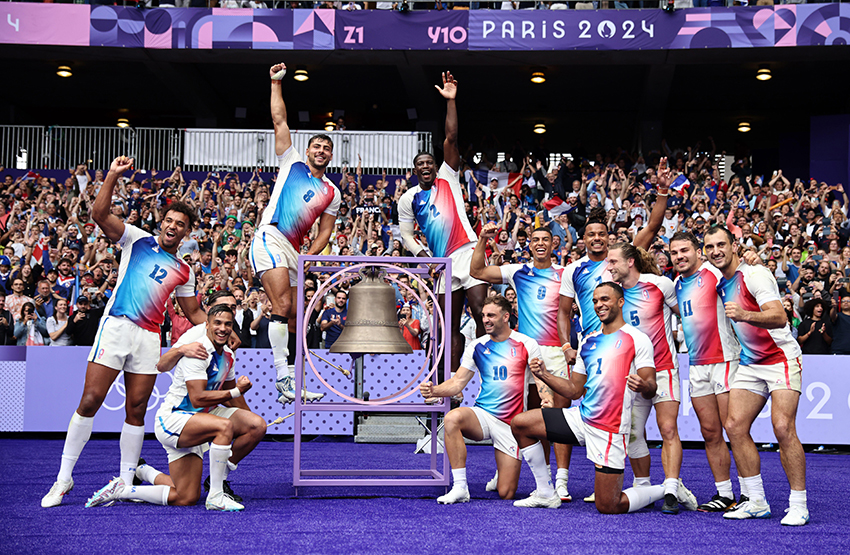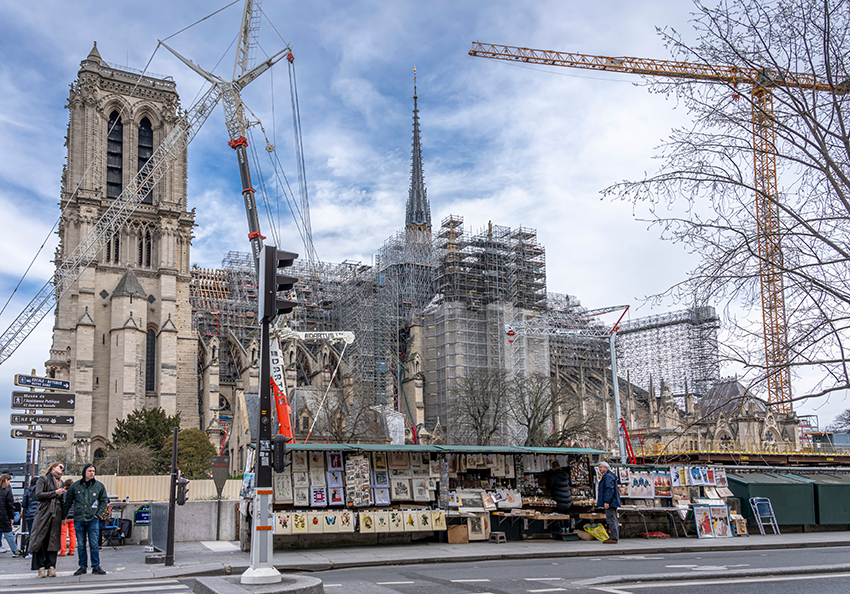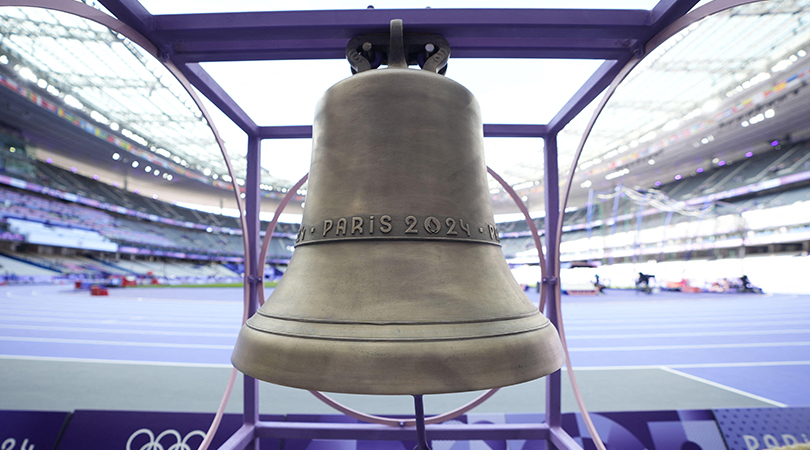On Sunday night, shortly after U.S. sprinter Noah Lyles won gold by five-thousandths of a second in a blink-and-you-miss-it photo finish at the 100-meter dash, a clear tocsin was heard among the din of the raucous and exultant crowd: the unmissable ring of a bell. Draped in the American flag, Mr. Lyles had hustled to the edge of the field at Stade de France. He, like all track and field athletes at the 2024 Paris Olympics who win gold medals or set records, was invited to sound this extraordinary bell. The ringing anointed his incredible achievement.
The bell was cast in bronze for these Olympic Games at the Fonderie Cornille Havard in Villedieu-les-Poeles-Rouffigny in Normandy, France. With a roughly 2-ft. diameter at the lip, the repeating inscription of “Paris 2024” encircles the bell’s waist. The Olympic rings are not included in the design, as the International Olympic Committee does not permit the lingering use of that mark outside of the Games. It is mounted on a Vitruvian-inspired metal frame near the stands, powder coated in the soft purple and pink coloring of the XXXIII Olympiad. A cast iron clapper is also dipped in a complementary shade of lilac.

Image: The French men’s rugby sevens team celebrates with the 2024 Paris Olympic Bell after the semi-final match against South Africa during the Summer Olympic Games at Stade de France on July 27, 2024.
The world’s most accomplished athletes come to celebrate their triumph at this bell. The tradition started at the beginning of the Games with the winners of each rugby sevens match striking the bell – a photo staple throughout the tournament. The French men’s team first clamored and jockeyed around the bell as nearly 70,000 fans resounded with applause. The United States women’s team, having clinched an unprecedented bronze medal of their own, were also given a chance to make the bell ring.
Now, as rugby has given way to track and field competitions at the stadium, only athletes who win gold medals or set records are permitted the honor. Olympians like Gabrielle Thomas (United States), Yaroslava Mahuchikh (Ukraine), and Keely Hodgkinson (Great Britain) have each pulled the rope that sounds the bell.

Image: Gabrielle Thomas, draped in the American flag, rings the 2024 Paris Olympic Bell after winning gold for the United States in the 200-meter final on day 11 of the Summer Olympic Games at Stade de France on Aug. 6, 2024.
Plans for a history-making bell
While there is still quite a bit of competition left in the City of Light, continuing through the Paralympic Games that follow, the fate of the 2024 Paris Olympic Bell is already written in bronze. Even when all the starting blocks, hurdles, vaulting poles, and javelins have been tucked away for another four years, the bell will continue to ring.
It’s no coincidence that the Cornille Havard bell foundry is also casting a set of bells for the renovated Notre-Dame de Paris, the breathtaking cathedral in the heart of Paris that was shuttered following a devastating fire in 2019 that ravaged the structure’s roof and iconic spire. After five years of refurbishment, the cathedral is set to reopen this December with the addition of three smaller bells to augment Notre-Dame’s impressive set of 10 multi-ton swinging beauties that survived the inferno.

Image: The cathedral of Notre-Dame de Paris is shrouded in scaffolding as restoration work continues in Paris, France, on March 8, 2024.
As chance would have it, Leslie Dufaux, the head of sports presentation for the 2024 Paris Olympics, had reached out to the 19th-century bell foundry in Normandy to inquire about casting a new bell just for the Games, when she learned that the cathedral was undertaking a similar commission. She then connected with Notre-Dame’s general manager, Laurent Prades, with an offer: What if the bell for the Olympics was given a second life as one of the new bells for the cathedral?
“My first reflection was that this bell is going to ring during prayer services and Mass, and that is very different from what is being used as now,” Mr. Prades said. But he was warmed over by the synergy of the two cornerstone cultural events happening in the same year – the hosting of the Olympics and the reopening of the cathedral. The interconnectedness, humanity, and uplifting spirit of the Games are also reflected in the mission of the church. He resolved: “It’s a symbol of peace and fraternity during the Olympics, which is what Notre Dame is exactly about, also.”
The idea took root and, after the Games, the bell will be installed with two others high inside the cathedral’s French Gothic architecture. Having shifted a few feet between the conclusion of the rugby tournament and the start of track and field events, the bell will next be loaded via forklift onto a truck and carted from the Stade de France in the commune of Saint-Denis back to the bell foundry, where it will join two other bells on a special mount. The set will then be shipped and installed in Notre-Dame just in time for the grand rededication.
While the three new bells won’t be visible to the public when the cathedral reopens, their presence and legacy will certainly be felt. As Mr. Dufaux said: “The sound of victory will remain in Notre-Dame.”
Cover image: The 2024 Paris Olympic Bell on day ten of the Summer Olympic Games at Stade de France on Aug. 6, 2024.



